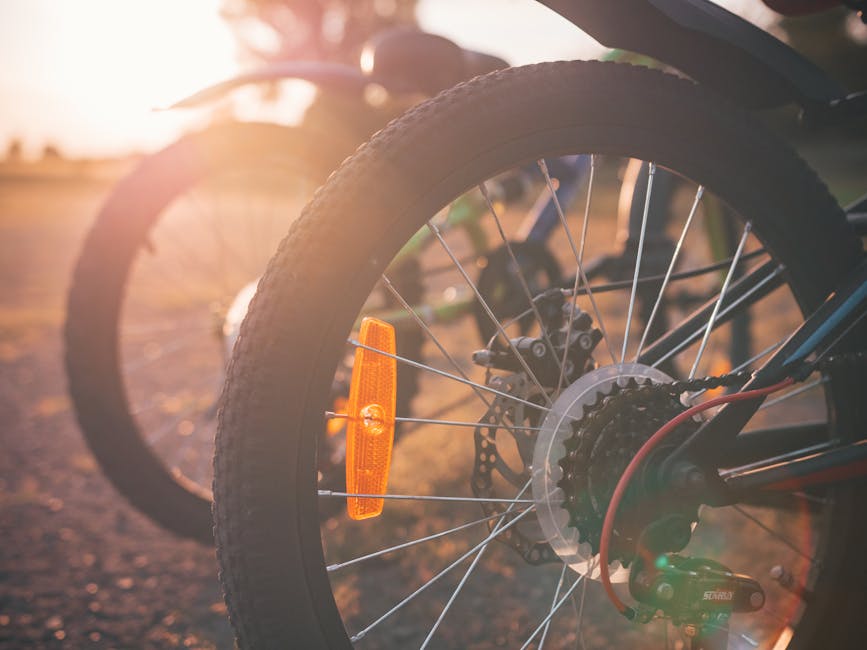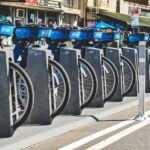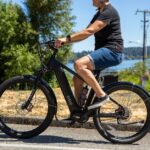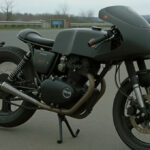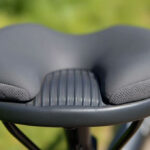Why Tire Pressure Matters
When it comes to optimizing your eBike’s performance, tire pressure is a crucial factor that often gets overlooked. The right tire pressure can make a huge difference in your ride, affecting speed, comfort, and how much energy you’re spending. If you’ve ever wondered why your bike feels sluggish or why you’re getting flats more often, the answer might lie in how much air you have in your tires.
When we talk about what slows you down, it’s mostly about rolling resistance. This involves two main aspects: casing losses and impedance losses.
- Casing losses happen when your tire bends and heats up as it rolls. The energy lost here makes your ride less efficient.
- Impedance losses come from the bumps on the ground. A hard tire won’t absorb bumps well, leading to more energy being required to move forward.
Silca tire pressure calculator helps you find the perfect balance between these losses, ensuring you get the smoothest and fastest ride possible.
Quick Overview for Silca Tire Pressure Calculator:
- Enter Total System Weight: Include rider, bike, and gear.
- Evaluate Riding Surface: Smooth pavement vs. rough terrain.
- Optimal Tire Pressure: Based on balancing casing and impedance losses.
Figure out the ideal pressure for your eBike tires easily with the Silca tire pressure calculator.

Silca tire pressure calculator word roundup:
Understanding Tire Pressure and Rolling Resistance
What Causes Rolling Resistance?
Rolling resistance is a key factor that slows you down while riding your bike. It is primarily caused by two types of energy losses: casing losses and impedance losses.
- Casing losses occur when your tire deforms as it rolls. This deformation generates heat, which is essentially wasted energy. The more your tire bends, the more energy you lose.
- Impedance losses happen when your bike encounters bumps and irregularities on the road. A stiff tire will lift the entire bike over each bump, requiring more energy. In contrast, a softer tire will absorb some of the bump, reducing the energy needed to keep moving.
How Tire Pressure Affects Rolling Resistance
The pressure in your tires directly influences how much energy you lose through casing and impedance losses.
-
Tire Deflection and Heat Loss: When you inflate your tires to a higher pressure, they become stiffer. This reduces the amount of tire deflection, leading to lower casing losses and less heat generation. However, if the pressure is too high, the tires can’t absorb road bumps effectively, increasing impedance losses.
-
Energy Absorption: Lower tire pressure allows the tire to absorb more of the bumps and irregularities on the riding surface. This reduces impedance losses but increases casing losses due to more tire deflection and heat generation.
Balancing these two types of losses is essential for optimal performance. The Doot Scoot tire pressure calculator is designed to help you find this balance. It calculates the breakpoint tire pressure—the point where increasing the pressure further would result in higher rolling resistance due to increased impedance losses.
Using the Doot Scoot tire pressure calculator, you can input your total system weight (rider, bike, and gear) and the type of surface you’ll be riding on. The calculator then provides you with the optimal tire pressure that minimizes both casing and impedance losses, ensuring a smooth and efficient ride.
How to Use the Doot Scoot Tire Pressure Calculator
Inputting Your Data
Using the Doot Scoot tire pressure calculator starts with gathering some key information about your ride. Here’s what you’ll need:
- Total System Weight: This includes the rider, bike, and any gear you’re carrying. Accuracy matters here, so try to get a precise weight.
- Tire Size: Know the dimensions of your tires, such as 700x25c for road bikes or 29×2.2 for mountain bikes.
- Riding Surface: The type of surface you’ll be riding on is crucial. Options range from smooth pavement to rough gravel.
Once you have this data, input it into the calculator. The calculator uses this information to provide a starting point for your tire pressure, aiming to find the breakpoint tire pressure—the optimal balance between casing and impedance losses.
Interpreting the Results
After inputting your data, the calculator will give you a recommended tire pressure. Here’s how to understand and use this information:
- Breakpoint Tire Pressure: This is the pressure where your tires will perform best, minimizing both casing and impedance losses. It’s your optimal pressure for the conditions specified.
- Surface Impedance: If you’re riding on a rough surface, the calculator will suggest a lower pressure to better absorb bumps. Conversely, for smooth surfaces, a higher pressure is recommended to reduce tire deflection.
For example, if your total system weight is 180 lbs and you’re riding on category 4 gravel, the calculator might suggest 40 psi for the front tire and 41.5 psi for the rear. This is a good starting point, but remember, real-world conditions can vary.
To fine-tune your tire pressure, consider doing some test rides. Start with the recommended pressure and adjust in small increments (about 5 psi) to find what feels best for your specific setup and riding style.

By using the Doot Scoot tire pressure calculator and understanding the results, you can achieve a smoother, faster, and more efficient ride.
Clincher vs. Tubeless vs. Tubular Tires
Differences in Tire Types
When it comes to bicycle tires, there are three main types: clincher, tubeless, and tubular. Each has its own unique characteristics and uses.
-
Clincher Tires: These are the most common type found on bikes. They use a separate inner tube to hold air and are easy to install and repair. Clinchers are popular for their convenience but can be prone to pinch flats.
-
Tubeless Tires: As the name suggests, these tires don’t require an inner tube. Instead, they form an airtight seal with the rim, often with the help of a liquid sealant. Tubeless tires are excellent for reducing the risk of pinch flats and can be run at lower pressures for better traction.
-
Tubular Tires: These tires have the inner tube sewn directly into the tire and are glued onto a special rim. They are favored by professional cyclists for their lightweight and ability to handle very high pressures, making them ideal for racing.
Impact on Tire Pressure
Different tire types affect tire pressure recommendations and performance in various ways.
Tire Casing and Efficiency
The tire casing—the material and construction of the tire—plays a significant role in determining tire efficiency. High-quality tires with better casings can move the breakpoint tire pressure higher, meaning they perform efficiently at higher pressures.
-
Clincher Tires: These generally have a more flexible casing, which can lead to higher casing losses. This means they might not be as efficient at higher pressures compared to tubular or tubeless options.
-
Tubeless Tires: These tires often have stiffer casings and can handle lower pressures without the risk of pinch flats. This makes them more efficient on rough surfaces where lower pressure is beneficial.
-
Tubular Tires: Known for their high-pressure capability, tubular tires have very efficient casings. They can handle extreme pressures, making them ideal for smooth surfaces like velodromes.
Pressure Handling and Recommendations
Each tire type has different pressure handling capabilities and recommendations:
-
Clincher Tires: Typically, clincher tires are recommended to run at moderate pressures. Overinflating can increase the risk of pinch flats and reduce comfort.
-
Tubeless Tires: These can be run at lower pressures than clinchers, enhancing grip and comfort without increasing the risk of flats. However, it’s crucial to follow the manufacturer’s recommendations to avoid issues.
-
Tubular Tires: These can handle very high pressures, often exceeding 100 psi. This makes them excellent for racing on smooth surfaces but less suitable for rough terrain.
Risk of Pinch Flats
-
Clincher Tires: Higher risk of pinch flats, especially if overinflated or ridden on rough surfaces.
-
Tubeless Tires: Lower risk of pinch flats, as there is no inner tube to pinch. They are ideal for rougher surfaces and off-road conditions.
-
Tubular Tires: Minimal risk of pinch flats due to the integrated design of the tire and tube, but they require careful installation and maintenance.
By understanding these differences, you can better use the Doot Scoot tire pressure calculator to find the optimal pressure for your specific tire type and riding conditions. This ensures you get the best performance, comfort, and safety from your tires.
Practical Tips for Using the Silca Tire Pressure Calculator
Testing Your Tire Pressure
To get the most out of the Silca tire pressure calculator, you need to test your tire pressure accurately. This is where the Chung Method comes in handy.
The Chung Method is a field testing technique that focuses on limiting variables to find the optimal tire pressure. Here’s how to do it:
- Keep Variables Consistent: Use the same bike, rider weight, tire, and riding position for each test. Avoid drinking from your water bottle during the test to keep the weight consistent.
- Choose a Test Route: Pick a section of road that you want to optimize for. Make sure the start and end points are at the same elevation.
- Start with Calculator Recommendations: Begin with the tire pressure suggested by the Silca tire pressure calculator.
- Run Multiple Tests: Do several runs at the recommended pressure, then do additional runs at pressures 5 psi higher and lower. This helps to identify the breakpoint tire pressure.
- Graph Your Results: Plot your times against the different pressures. You should see a clear change in times around the breakpoint pressure. If not, test with larger pressure differences.
By following these steps, you ensure that your tire pressure is optimized for speed and performance on your chosen surface.
Adjusting for Different Conditions
Different riding conditions require adjustments to the tire pressure. Here’s how to adapt for various scenarios:
- Wet Weather: In wet conditions, grip becomes more important than speed. Lower your tire pressure slightly to increase the contact patch with the road, enhancing grip and safety.
- Muddy or Dusty Surfaces: For cyclocross or similar conditions, significantly lower pressures may be necessary. For example, while the calculator might suggest 40 psi for a gravel race, muddy conditions may require pressures as low as 20-25 psi to maintain grip and control.
- Surface Variation: If you’re riding on mixed surfaces, start with the calculator’s recommendation and adjust based on feel. Lower pressures generally provide better comfort and control on rough surfaces, while higher pressures are better for smooth, fast roads.
The Silca tire pressure calculator is a starting point. Use it to find a baseline, then adjust based on real-world testing and the specific conditions you encounter. This ensures you get the best performance every time you ride.
Frequently Asked Questions about the Silca Tire Pressure Calculator
How should one adjust for wet weather riding?
In wet weather, safety and grip are your top priorities. Lowering your tire pressure by about 10 psi can make a big difference. This increases the contact patch between your tire and the road, providing better grip and reducing the risk of slipping.
As one user noted, “If you aren’t going to swap them at the very least let some extra air out of them.” This advice is especially useful in wet conditions where grip is more critical than speed.
What is the breakpoint tire pressure?
The breakpoint tire pressure is the optimal tire pressure where casing losses and surface impedance are balanced. When you inflate your tires, they get faster up to a point. Beyond this point, known as the breakpoint, rolling resistance increases due to surface impedance.
To find this pressure, start with the recommendations from the Silca tire pressure calculator and adjust up or down by 5 psi, as described in the Chung Method. Graph your results to see where the times change, indicating your breakpoint pressure.
Why is it better to be too low than too high with tire pressure?
Testing has shown that being slightly underinflated is better than being overinflated. For example, being 10 psi below the optimal pressure only costs 1 watt, while being 10 psi too high can cost you 9 watts.
This is because lower pressures reduce rolling resistance by allowing the tire to absorb surface bumps better. Higher pressures increase surface impedance, making your ride less efficient.
As the data suggests, “The data would suggest that you should default to a lower tire pressure in the range vs higher given a choice.” Lower pressure also improves grip and safety, making it a safer bet, especially in varied riding conditions.
Conclusion
At Doot Scoot, we are passionate about promoting eco-friendly transportation and helping our community make informed decisions about their eBikes. Understanding tire pressure and using tools like the Silca tire pressure calculator can greatly improve your riding experience.
Using the right tire pressure not only improves your bike’s performance but also ensures your safety. With the Silca tire pressure calculator, you can achieve the optimal balance between rolling resistance and surface impedance, making your rides smoother and more efficient.
We believe in building a supportive community of eBike enthusiasts. Our customer support team is always here to help you with any questions or issues you might have. Whether you need advice on tire pressure, maintenance tips, or anything else, we’ve got you covered.
For more tips and tools to keep your eBike in top shape, visit our Tools Page. Let’s ride together towards a greener future!
